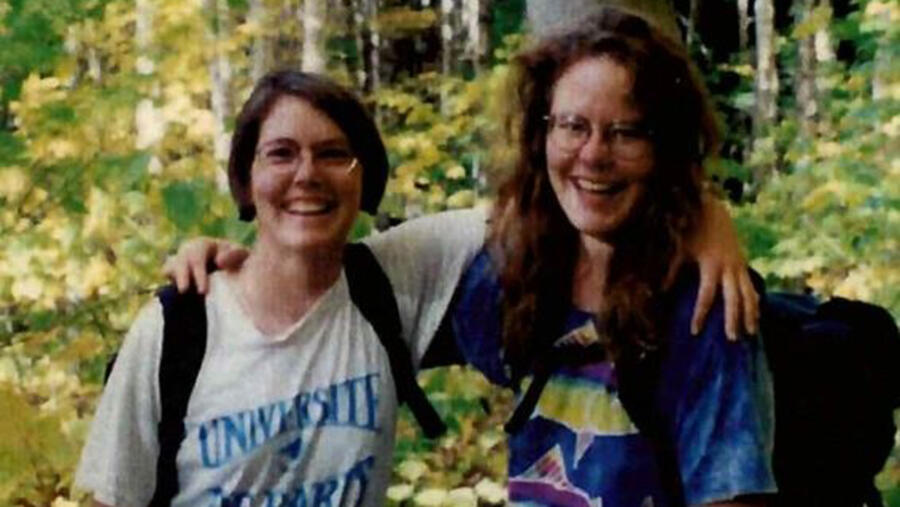Introduction
The Lollie Winans and Julie Williams murder case is one of the most chilling and tragic cold cases in American wilderness history. In May 1996, what should have been a peaceful backpacking trip in Shenandoah National Park ended in a horrifying double homicide that shocked the nation. Despite years of investigations, arrests, and suspect profiles, the real killer has never been brought to justice.
The Victims: Who Were Lollie and Julie?
Laura “Lollie” Winans was a vibrant, compassionate 26-year-old wilderness guide. Julianne “Julie” Williams, 24, was a smart and accomplished geologist. Both women were deeply in love and shared a passion for the outdoors. Their bond transcended the societal norms of the 90s, at a time when being openly queer was far more dangerous than today.
A Dream Hiking Trip Turned Tragic
In May 1996, Lollie and Julie ventured into Virginia’s Shenandoah National Park, eager to disconnect from urban chaos. They were last seen near Skyland Lodge, unaware that they would soon become victims of a heinous crime.
The Grisly Discovery
Days later, their dog Taj was found wandering, leading to the grim discovery of their lifeless bodies at a secluded campsite. Both women were bound and gagged, and their throats had been slashed. The brutality hinted at a deeply personal or hate-driven motive.
Timeline of Events
From the couple’s entrance into the park to the FBI’s eventual involvement, the timeline reveals glaring delays, conflicting jurisdiction, and a rush to judgment. Critical hours—and possibly vital evidence—were lost in the process.
The National Shockwave
This wasn’t just another murder case. It symbolized the fear faced by LGBTQ+ Americans in hostile spaces. The tragedy sparked headlines across major news outlets and even reached political discourse.
Initial Investigation Missteps
The crime scene wasn’t properly preserved. Investigators couldn’t determine where the attack began. With the wilderness as an open crime scene, clues may have vanished with the wind, rain—or wild animals.
FBI vs. National Park Service: Turf War
Author Kathryn Miles uncovered tension between the FBI and the National Park Service. The FBI questioned the competence of park rangers, while the rangers believed the feds lacked wilderness expertise. This bureaucratic conflict stalled the case’s progress.
The Wrong Suspect?
Darrell David Rice was indicted in 2002 under hate crime statutes. However, forensic evidence—including DNA from the crime scene—excluded him. Charges were dropped in 2004, but he was never fully cleared in the eyes of the FBI.
Serial Killer Theory: Richard Evonitz
Shockingly, the DNA matched 799 out of 800 markers to serial predator Richard Evonitz, a man known for abducting and murdering young women. Despite this, the FBI never pursued him, possibly due to his suicide in 2002 or institutional reluctance to admit a mistake.
The Role of DNA Evidence
DNA should have exonerated Rice completely. It didn’t. Authorities clung to outdated profiles, overlooking newer and more accurate forensic leads. This is a glaring example of confirmation bias within criminal investigations.
Was It a Hate Crime?
The FBI charged Rice under hate crime laws, but no solid evidence ever confirmed the motive. Was it a hate crime? Or was it a calculated attack by a serial killer preying on isolated victims?
Pattern of Violence in National Parks
Miles documented numerous unsolved murders and disappearances in national parks. Shockingly, there’s no national database tracking these crimes, allowing killers to slip away unnoticed.
Kathryn Miles and the Book “Trailed”
In Trailed: One Woman’s Quest to Solve the Shenandoah Murders, Miles reveals not just facts but emotional truths. As a survivor of sexual assault, her journey is both investigative and deeply personal.
Why the Case Still Resonates
Because this could happen to anyone. Because it did happen to people in love, enjoying nature. And because justice remains out of reach—a haunting thought for families, activists, and lovers of the outdoors.
Frequently Asked Questions
Who were Lollie Winans and Julie Williams?
They were a couple in their 20s who loved nature and adventure. Both were highly educated and experienced in outdoor survival.
Where were their bodies found?
Their remains were discovered near a hidden campsite off the Appalachian Trail in Shenandoah National Park.
Was Darrell Rice ever convicted?
No. Charges against Rice were dropped in 2004 due to insufficient evidence and exculpatory DNA results.
Who is Richard Evonitz?
A known serial killer whose DNA almost perfectly matched evidence from the crime scene but was never officially investigated in this case.
Was the murder a hate crime?
It’s possible, but unconfirmed. Authorities initially pushed that theory, but newer evidence suggests it may have been the work of a serial predator.
Is the case still open?
Yes, officially. But it remains cold, with no active leads or public updates in recent years.
Conclusion
The Lollie Winans and Julie Williams murder case is more than a cold case—it’s a reflection of flawed justice systems, overlooked victims, and unhealed wounds. Until there is full accountability, closure will remain elusive. But their story must be told, again and again, until the truth is heard over the silence of the forest.

